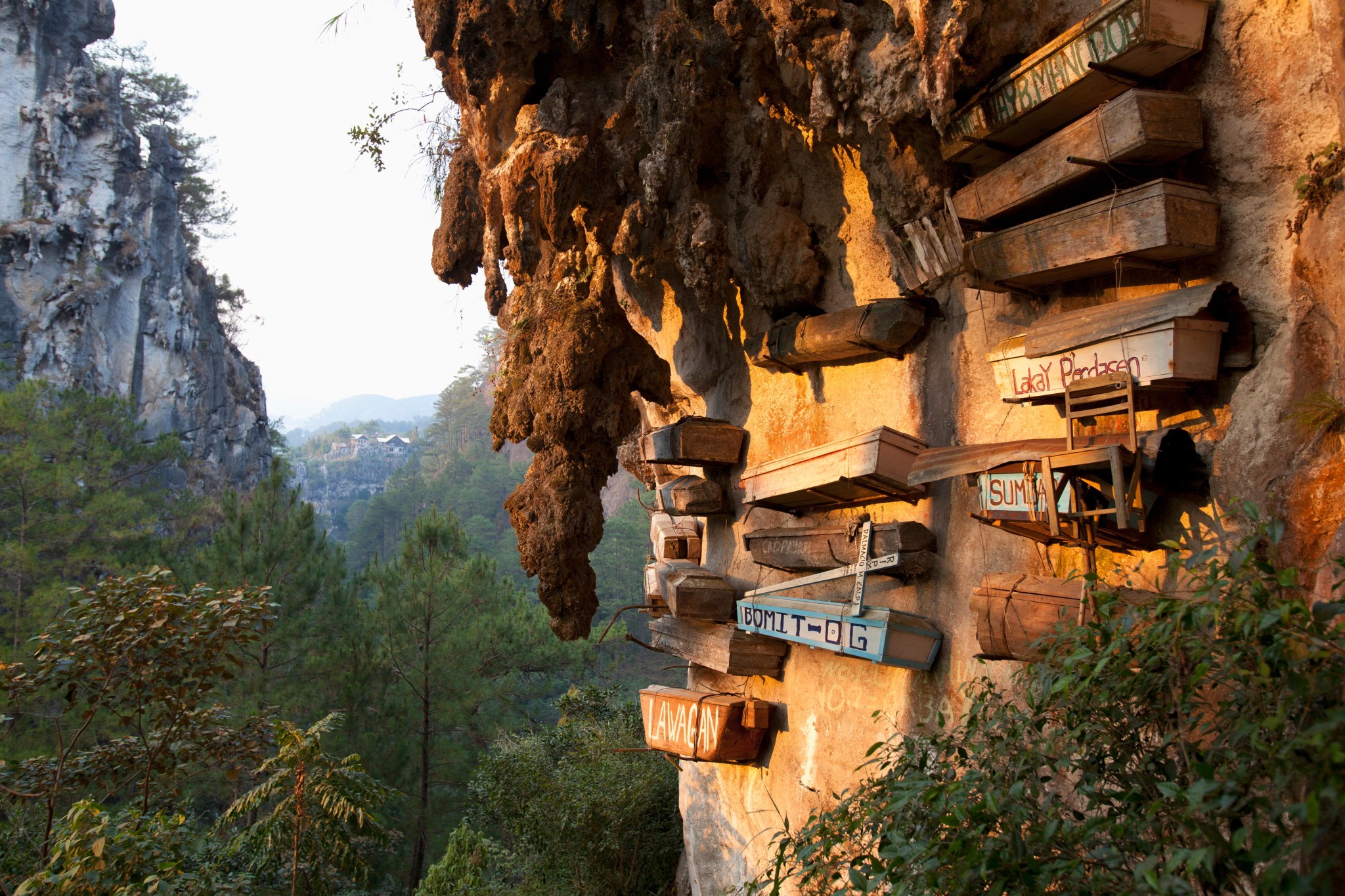
Royal Funeral Traditions Around The World
1. Taiwan - popularity and strippers
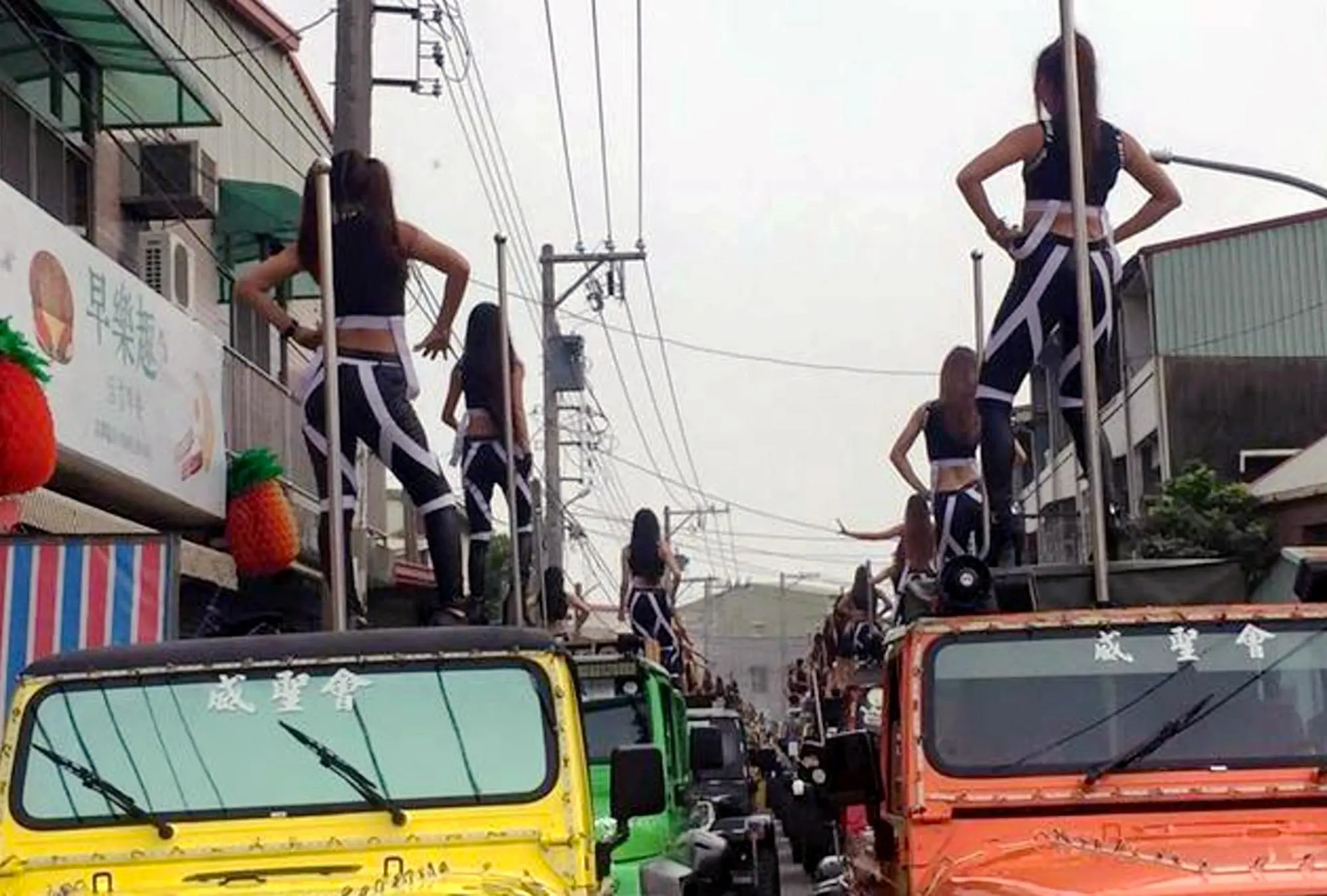 Image source/ The SunIn Taiwan, China the funeral is highly important. One of the most important aspects of their funerals is that it must be well attended. And so, families use all sorts of methods to do this. The most conventional is holding a feast to attract guests. More unusual methods include hiring a stripper.
Image source/ The SunIn Taiwan, China the funeral is highly important. One of the most important aspects of their funerals is that it must be well attended. And so, families use all sorts of methods to do this. The most conventional is holding a feast to attract guests. More unusual methods include hiring a stripper.Advertisement
2. India - escape the rebirth cycle
 Image source/ hindustiantimesIn India it is common thought that someone who dies will be reborn into something or someone else. However, if they are scattered into a very holy place, such as the river Ganges, they can escape this cycle of rebirth and be sent straight to heaven...
Image source/ hindustiantimesIn India it is common thought that someone who dies will be reborn into something or someone else. However, if they are scattered into a very holy place, such as the river Ganges, they can escape this cycle of rebirth and be sent straight to heaven...Advertisement
3. Sagada, Philippines - mountain rituals
 Image source/ New scientistIn Sagada, in the Philippines they carry the bodies of their deceased loved ones right to the top of the mountains, as far as they can reach and hang the coffin from the mountain. The belief is that by doing this ritual, the higher up they put the body, the easier their passage to heaven is.
Image source/ New scientistIn Sagada, in the Philippines they carry the bodies of their deceased loved ones right to the top of the mountains, as far as they can reach and hang the coffin from the mountain. The belief is that by doing this ritual, the higher up they put the body, the easier their passage to heaven is.Advertisement
4. New Orleans - Jazz Funeral
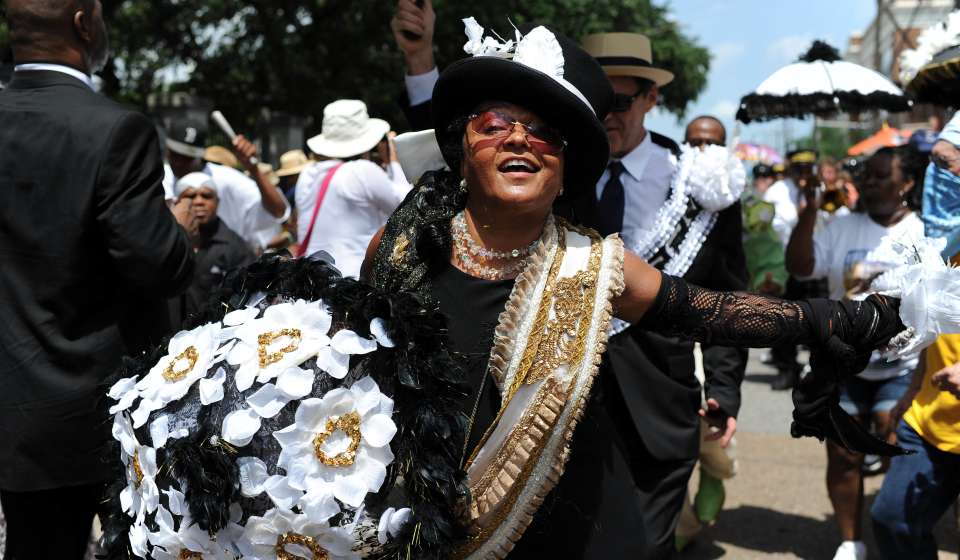 Image source/ visitneworleansIn New Orleans the funeral process is a big one. They have a huge jazz band which follows in procession. It has been a tradition for many, many years that the people of New Orleans have this jazz funeral as it has fused traditions from West African, French and African-America.
Image source/ visitneworleansIn New Orleans the funeral process is a big one. They have a huge jazz band which follows in procession. It has been a tradition for many, many years that the people of New Orleans have this jazz funeral as it has fused traditions from West African, French and African-America.Advertisement
5. South Korea - 60-year rule
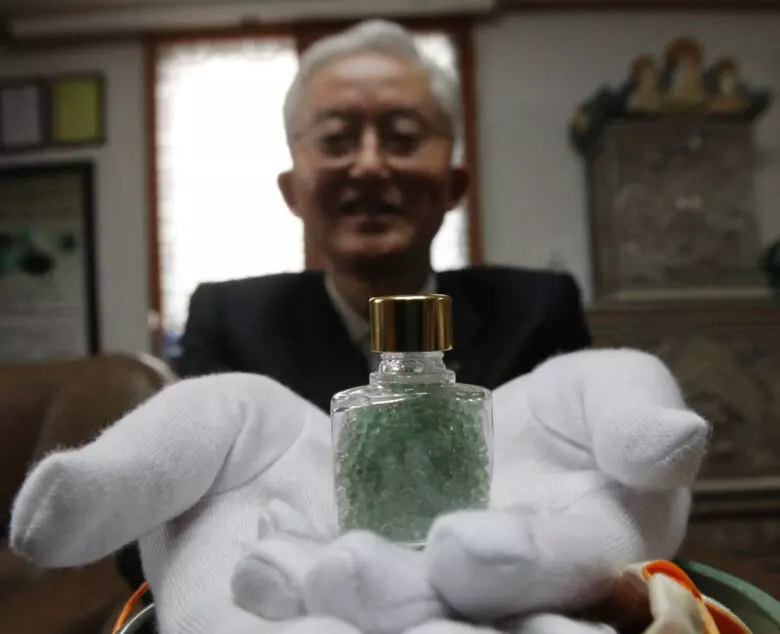 Image source/ timelifestylenetIn South Korea burial was always the most traditional method when someone dies, and the country is now having a problem with space. So there has long been a 60-year rule where 60 years after burial, the grave has to be removed. Now much more people are turning to cremation and the ashes are being turned into turquoise beads.
Image source/ timelifestylenetIn South Korea burial was always the most traditional method when someone dies, and the country is now having a problem with space. So there has long been a 60-year rule where 60 years after burial, the grave has to be removed. Now much more people are turning to cremation and the ashes are being turned into turquoise beads.Advertisement
6. Northwestern Philippines- blindfolding and binding
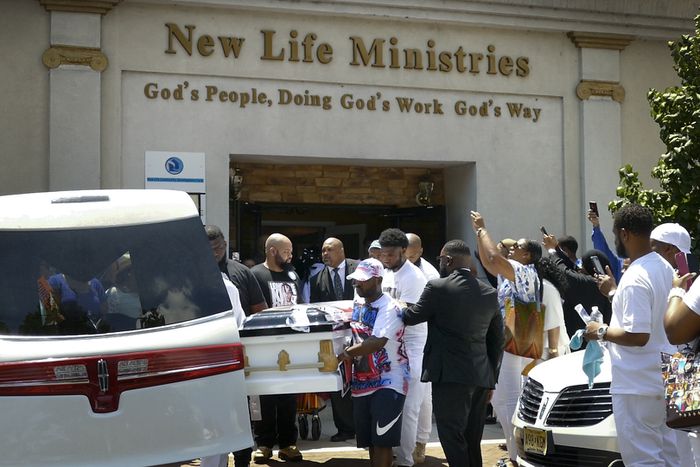 Image source/ blogspotIn the North-western part of the Philippines, they have an unusual burial tradition. This involves blindfold the deceased for eight days and then place them next to the front door of their house with their limbs tied together so that they remain in a seated position.
Image source/ blogspotIn the North-western part of the Philippines, they have an unusual burial tradition. This involves blindfold the deceased for eight days and then place them next to the front door of their house with their limbs tied together so that they remain in a seated position.Advertisement
7. Tinguian - sit and smoke
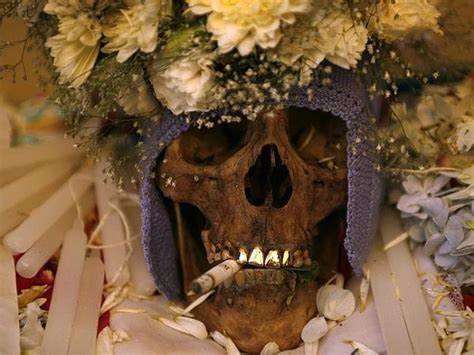 Image source/ scoopwhoopIn the Tinguian tradition burial rituals are a very unique kind of practice. First, they dress them in their best clothes and then place them sitting up on a chair. They then take a cigarette and place it between their lips so that it looks as though they are still present.
Image source/ scoopwhoopIn the Tinguian tradition burial rituals are a very unique kind of practice. First, they dress them in their best clothes and then place them sitting up on a chair. They then take a cigarette and place it between their lips so that it looks as though they are still present.Advertisement
8. Caviteño and Manila - burial in a hollowed tree trunk
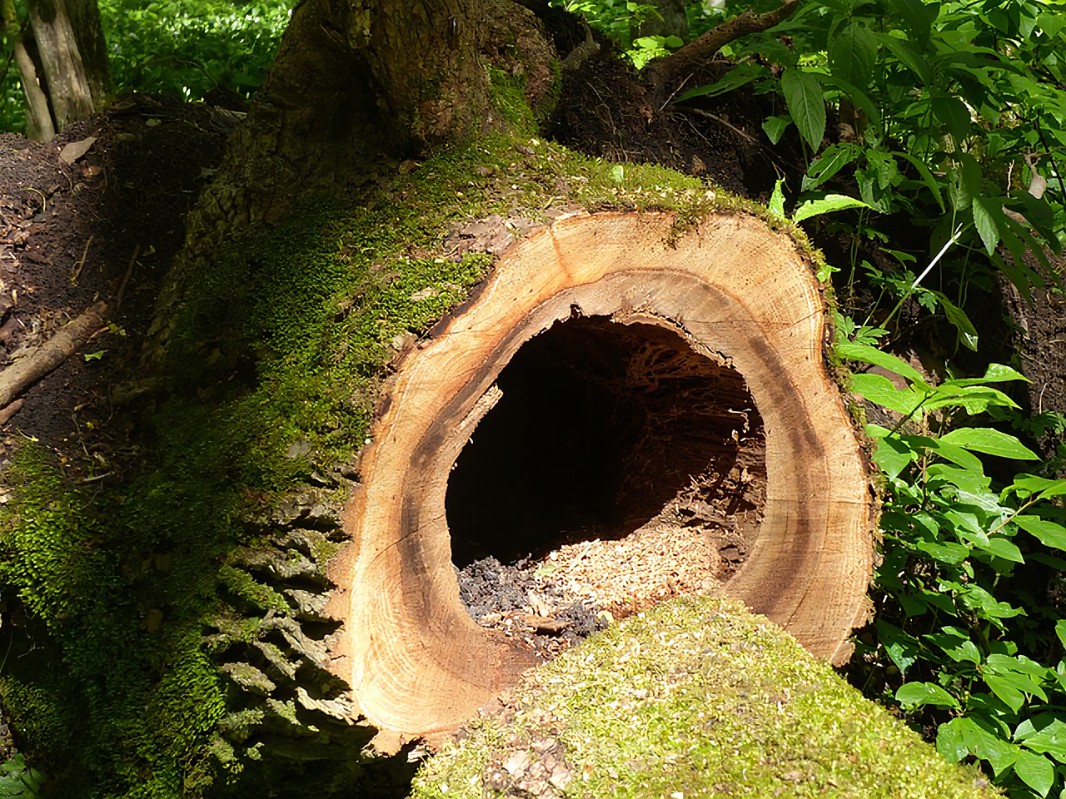 Image source/ blog.sevenpoundsIn Caviteño and Manila they have a funeral ritual which is very akin with nature. They place their dead in a hollowed-out tree trunk. So, when someone is dying or sick, they will be asked to choose their tree which will later become their kind of natural tomb.
Image source/ blog.sevenpoundsIn Caviteño and Manila they have a funeral ritual which is very akin with nature. They place their dead in a hollowed-out tree trunk. So, when someone is dying or sick, they will be asked to choose their tree which will later become their kind of natural tomb.Advertisement
9. Mongolia and Tibet - tribute to nature
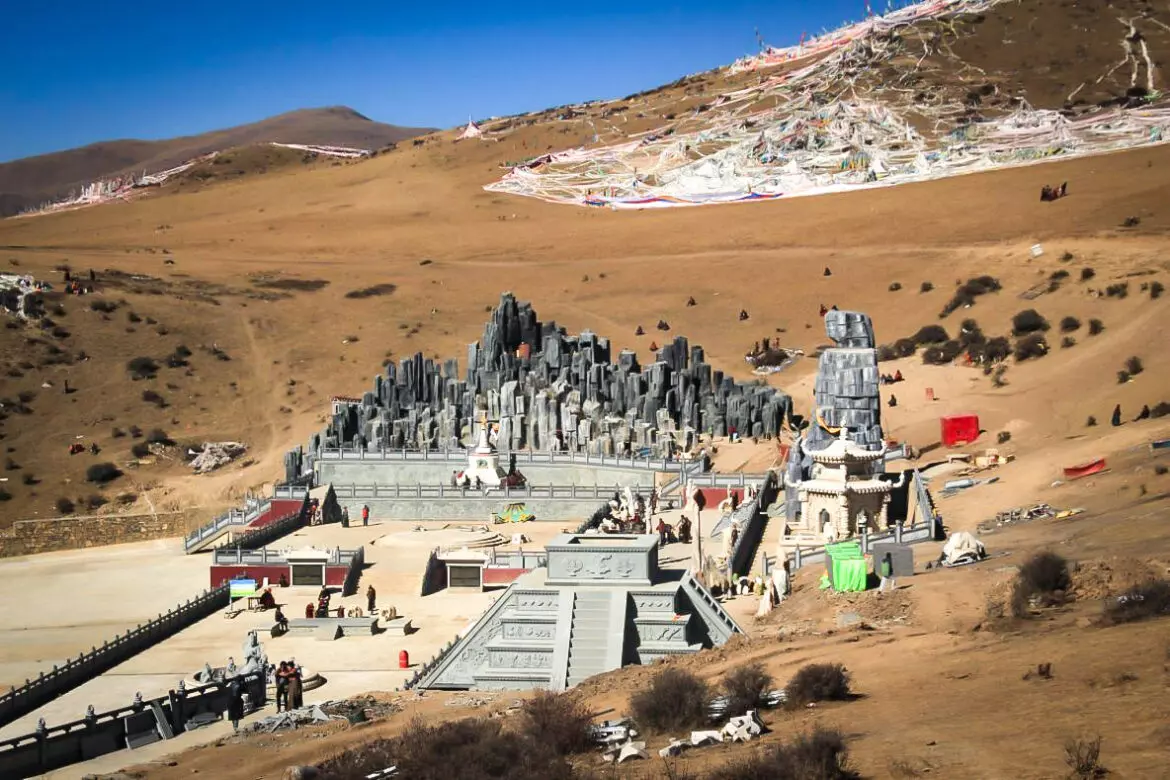 Image source/ timelifestylenetIn Mongolia and Tibet the belief is that after death our spirits live on and transmit to other places. So, to return the spirit to the earth they place the body - which they chop into small pieces - at the top of a mountain. They then wait for a vulture to come and take the pieces.
Image source/ timelifestylenetIn Mongolia and Tibet the belief is that after death our spirits live on and transmit to other places. So, to return the spirit to the earth they place the body - which they chop into small pieces - at the top of a mountain. They then wait for a vulture to come and take the pieces.Advertisement
10. Bali - cremation parties
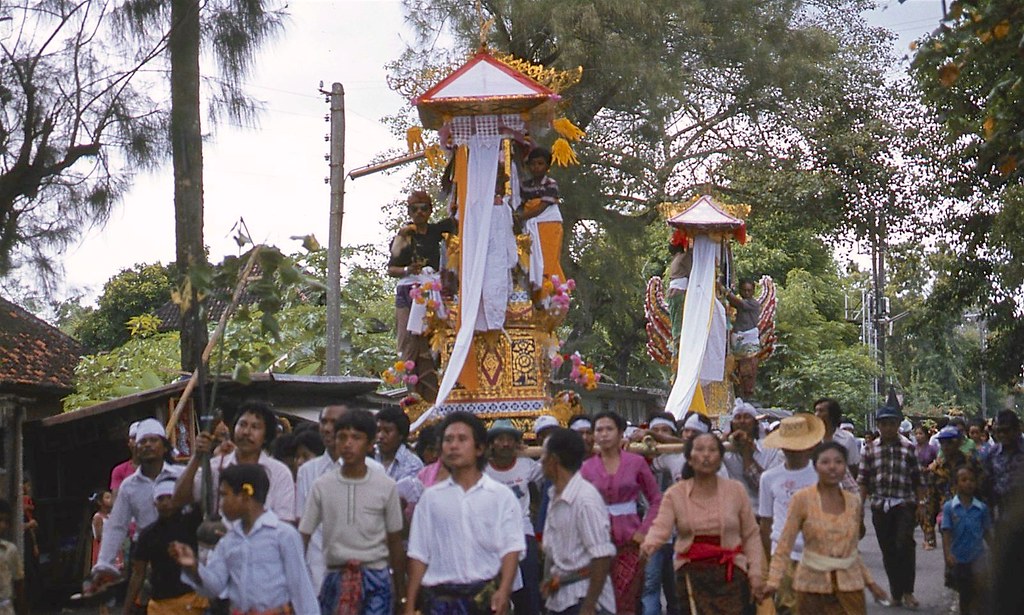 Image source/ flickrIn Bali, the biggest parties and celebrations actually happen during the cremation process. There are huge processions as they believe that the body is released from the spirit during cremation and that the spirit then goes on and inhabits a new body.
Image source/ flickrIn Bali, the biggest parties and celebrations actually happen during the cremation process. There are huge processions as they believe that the body is released from the spirit during cremation and that the spirit then goes on and inhabits a new body.Advertisement
11. Madagascar - Famadihana or the turning of the bones
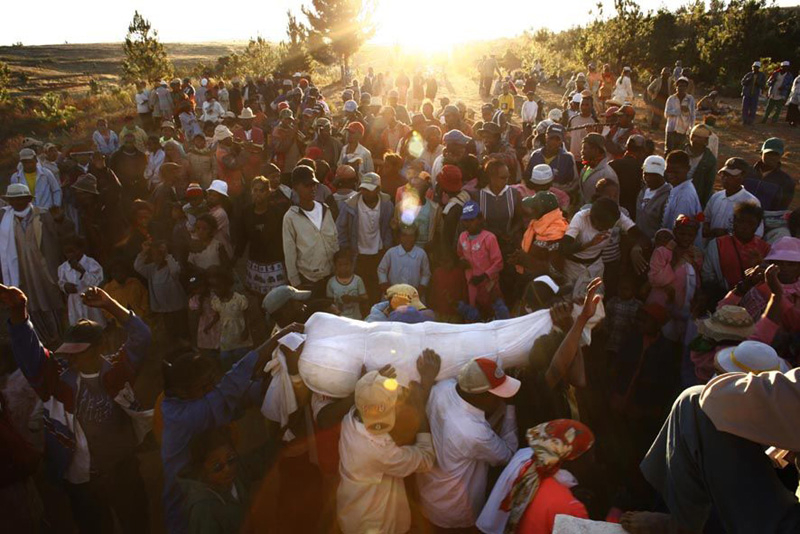 Image source/ wordpressFamadihana or as it is also known as the turning of bodies, is a ritual which happens once every five or seven years. The ritual includes, singing and dancing around the body and with the body. The family and friends chat to the deceased and share stories with one another to keep their memory alive.
Image source/ wordpressFamadihana or as it is also known as the turning of bodies, is a ritual which happens once every five or seven years. The ritual includes, singing and dancing around the body and with the body. The family and friends chat to the deceased and share stories with one another to keep their memory alive.Advertisement
12. Aborigines - natural decomposition
 Image source/ blog.sevenpoundsIn the Aborgines, Australia there are a few processes which happen as part of the traditional funeral ritual. The first step is smoking the living room of the deceased to clear out their spirit. Then the mourners are painted ochre, and the body is placed on a platform and dressed in leaves and left there until the body decomposes.
Image source/ blog.sevenpoundsIn the Aborgines, Australia there are a few processes which happen as part of the traditional funeral ritual. The first step is smoking the living room of the deceased to clear out their spirit. Then the mourners are painted ochre, and the body is placed on a platform and dressed in leaves and left there until the body decomposes.Advertisement
13. Ghana's - representative coffins
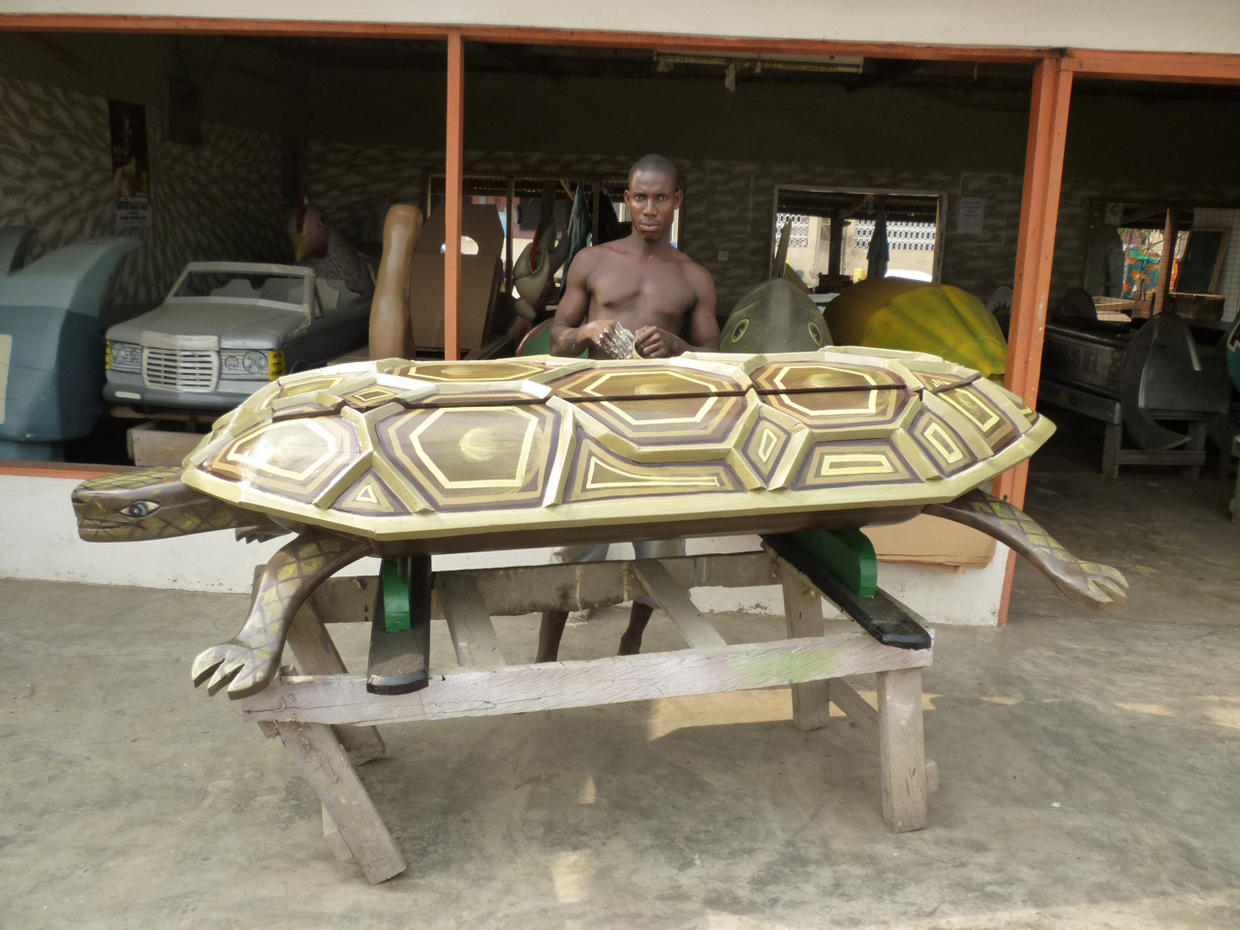 Image source/ CBS newsIn Ghana the coffins are not a standard black box by any means. The coffin is very much a representation of something about the person who has died. For example, it will be made to reflect either the work they did or something they really loved to do in life - for example an airplane coffin or a huge bible.
Image source/ CBS newsIn Ghana the coffins are not a standard black box by any means. The coffin is very much a representation of something about the person who has died. For example, it will be made to reflect either the work they did or something they really loved to do in life - for example an airplane coffin or a huge bible.Advertisement
14. Sweden - special place
 Image source/ sverigesradioIn Sweden, a lot of burial rituals have died out as the country becomes more and more secular. But, for those who still maintain their religious beliefs there is a ritual that happens. The body is left in a place that was special to that person and they remain there for around 1-3 weeks before being buried.
Image source/ sverigesradioIn Sweden, a lot of burial rituals have died out as the country becomes more and more secular. But, for those who still maintain their religious beliefs there is a ritual that happens. The body is left in a place that was special to that person and they remain there for around 1-3 weeks before being buried.Advertisement
15. Antyesti, India - return to the elements
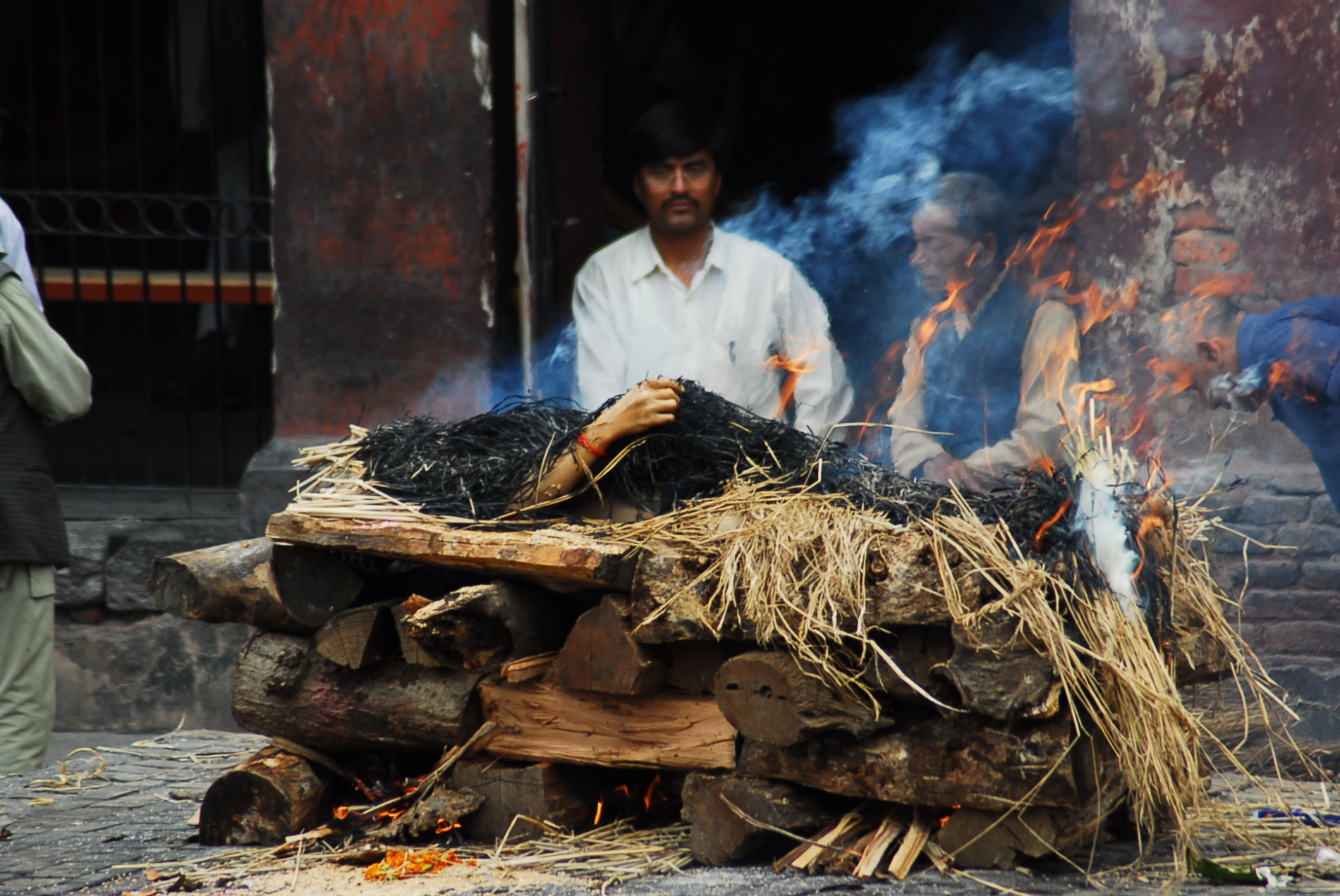 Image source/ wordpressIn Antyesti, India it is believed that the body should be returned back to the elements., To do this there will be a specific ceremony and ritual. But this all depends on different things such as age, caste and gender. This will determine how the symbolic returning to the elements will happen.
Image source/ wordpressIn Antyesti, India it is believed that the body should be returned back to the elements., To do this there will be a specific ceremony and ritual. But this all depends on different things such as age, caste and gender. This will determine how the symbolic returning to the elements will happen.Advertisement
16. Han Dynasty China - burial outfits of jade
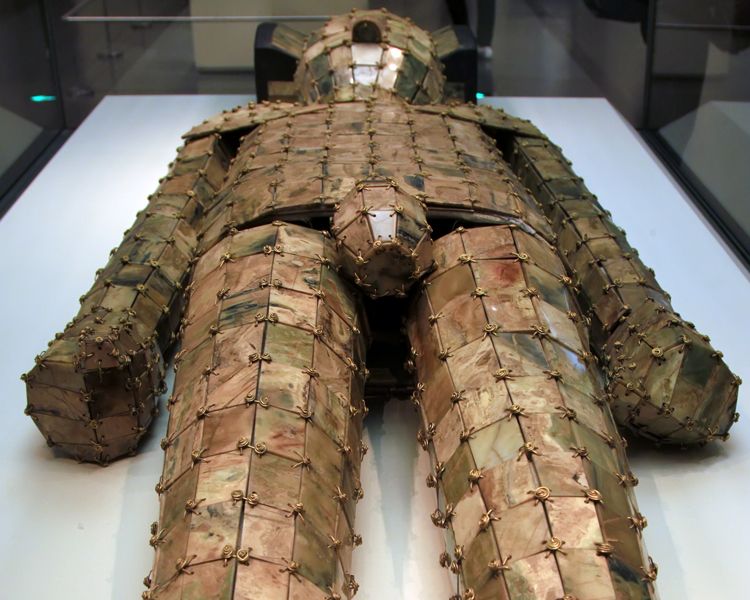 Image source/ everplansThose part of the Han Dynasty have long been buried in suits made from jade. The jade is cut into squares and carefully pieced together. These take years to complete and of course they are a symbol of importance for the body joining into the afterlife.
Image source/ everplansThose part of the Han Dynasty have long been buried in suits made from jade. The jade is cut into squares and carefully pieced together. These take years to complete and of course they are a symbol of importance for the body joining into the afterlife.Advertisement
17. The Republic of Kiribati - keeping the skull
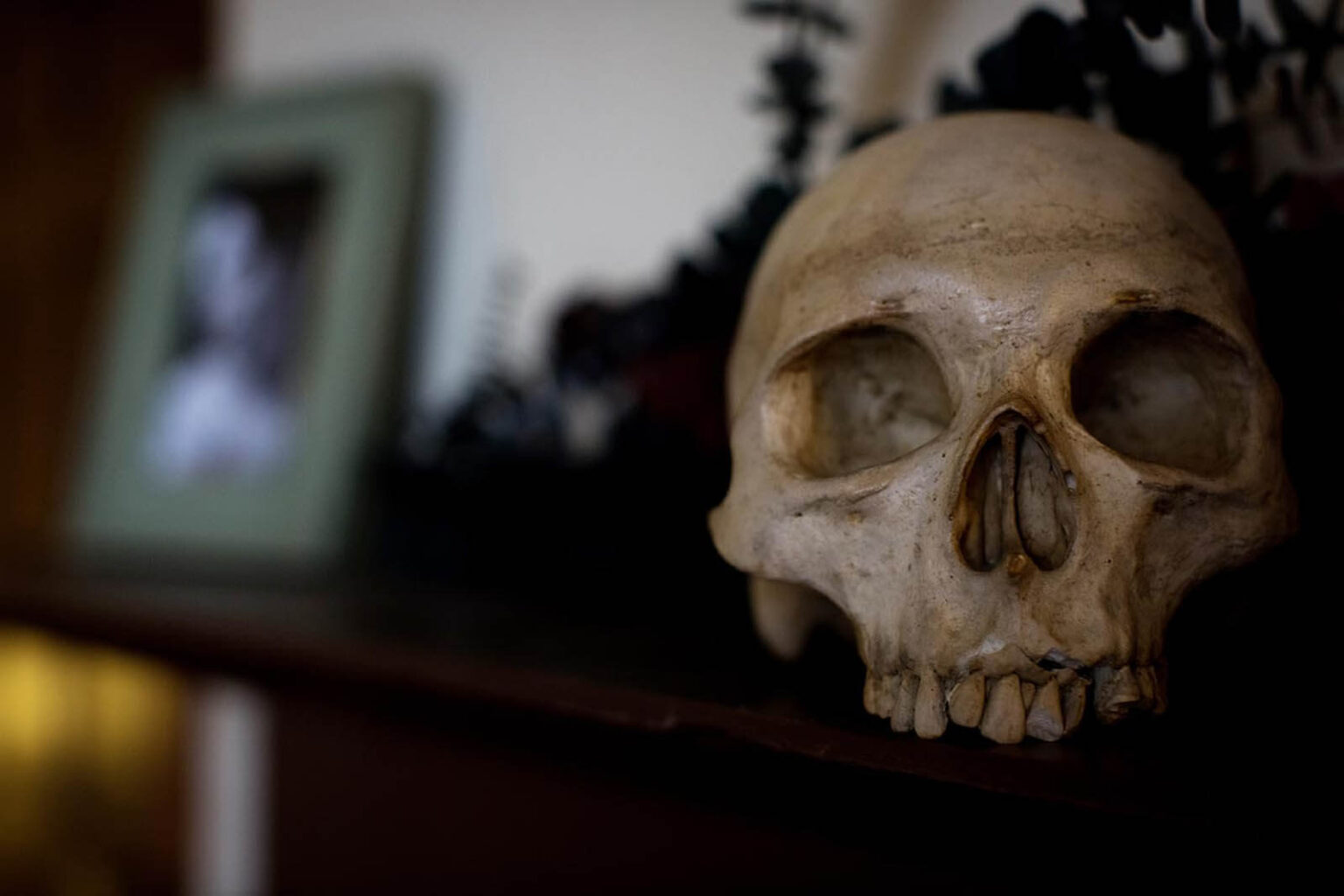 Image source/ rumorfixIn The Republic of Kiribati, families of the deceased will keep the skull. They will wait a few months after the burial of the body when the flesh and decomposed and then they take the skull. They place it at home, polish it and sometimes offer it things such as tobacco.
Image source/ rumorfixIn The Republic of Kiribati, families of the deceased will keep the skull. They will wait a few months after the burial of the body when the flesh and decomposed and then they take the skull. They place it at home, polish it and sometimes offer it things such as tobacco.Advertisement
18. Victorian England - photos and tokens
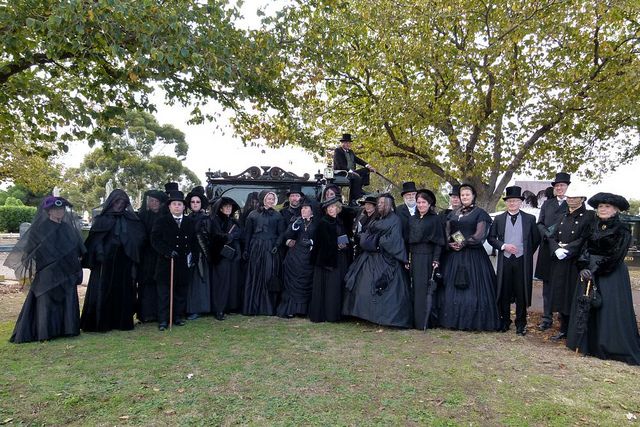 Image source/ pinterestIn Victorian England it became very popular to take post-mortem photos of the dead. It was also popular practice to take hair of the deceased and give it as gifts and tokens, as well as their personal items. This practice however, died out in England.
Image source/ pinterestIn Victorian England it became very popular to take post-mortem photos of the dead. It was also popular practice to take hair of the deceased and give it as gifts and tokens, as well as their personal items. This practice however, died out in England.Advertisement
19. Ancient Greece/ Egypt - instructions for the afterlife
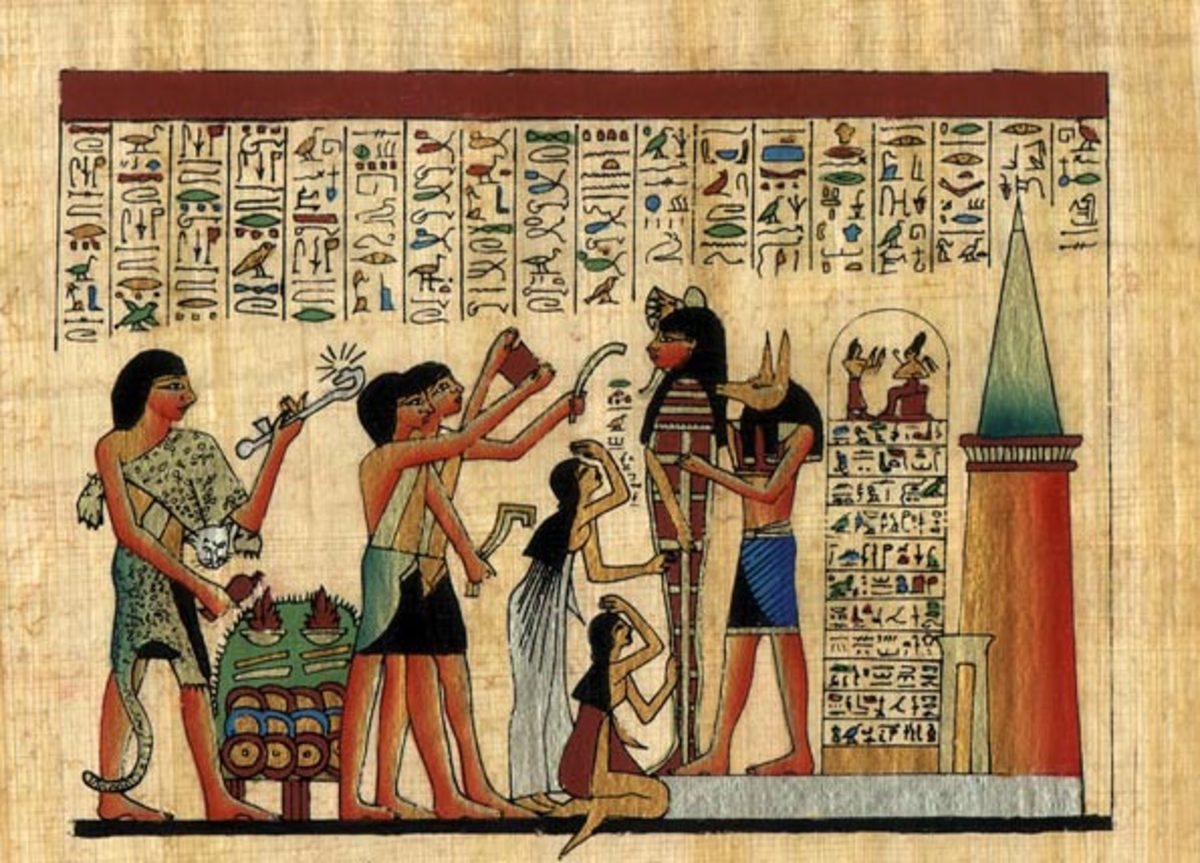 Image source/ HubPagesIn ancient Egypt and Greece, they used to write what could only be described as instructions on the sides of tombs. This was done to help the dead be able to navigate the afterlife better. So, historians have since discovered these inscriptions on the sides of the tombs.
Image source/ HubPagesIn ancient Egypt and Greece, they used to write what could only be described as instructions on the sides of tombs. This was done to help the dead be able to navigate the afterlife better. So, historians have since discovered these inscriptions on the sides of the tombs.Advertisement
20. Spain - displayed bodies
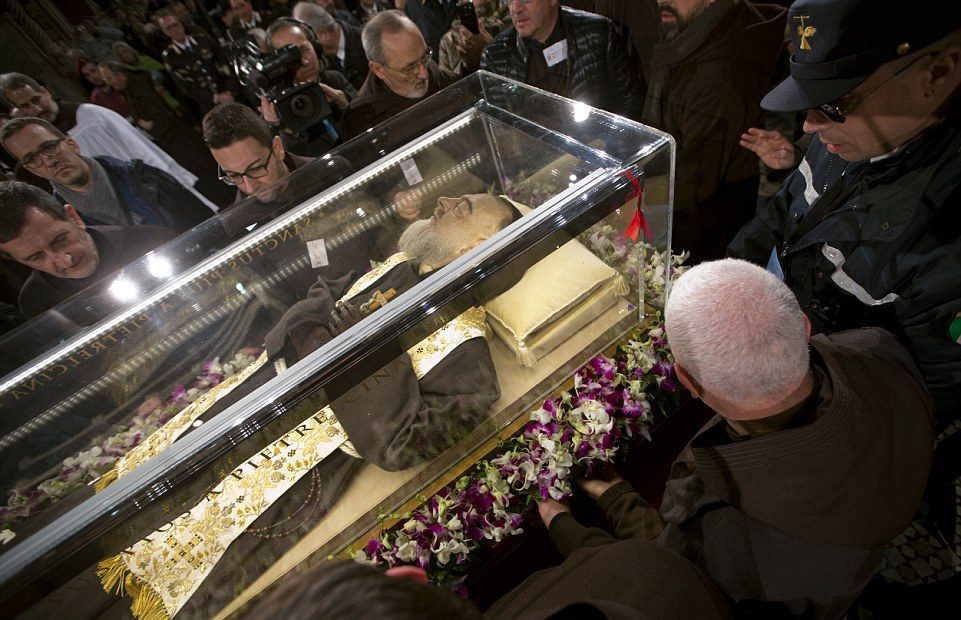 Image source/ DailyMailIn Spain it is a common ritual to hold the body within a glass case for a few days so that everybody who wants to can come and pay their respects and see the person. It is a lot more open than many cultures where the viewing of the body is reserved for a few people.
Image source/ DailyMailIn Spain it is a common ritual to hold the body within a glass case for a few days so that everybody who wants to can come and pay their respects and see the person. It is a lot more open than many cultures where the viewing of the body is reserved for a few people.Advertisement
21. Tokyo - glowing Buddha
 Image source/ CBSnewsIn Tokyo there is a new more modern ritual which is growing ever more popular. This is that the remains of their loved one will be placed inside a glass Buddha container. It will then light up and glow white to show the deceased how to reach their family members.
Image source/ CBSnewsIn Tokyo there is a new more modern ritual which is growing ever more popular. This is that the remains of their loved one will be placed inside a glass Buddha container. It will then light up and glow white to show the deceased how to reach their family members.Advertisement
22. Laos - lively celebration
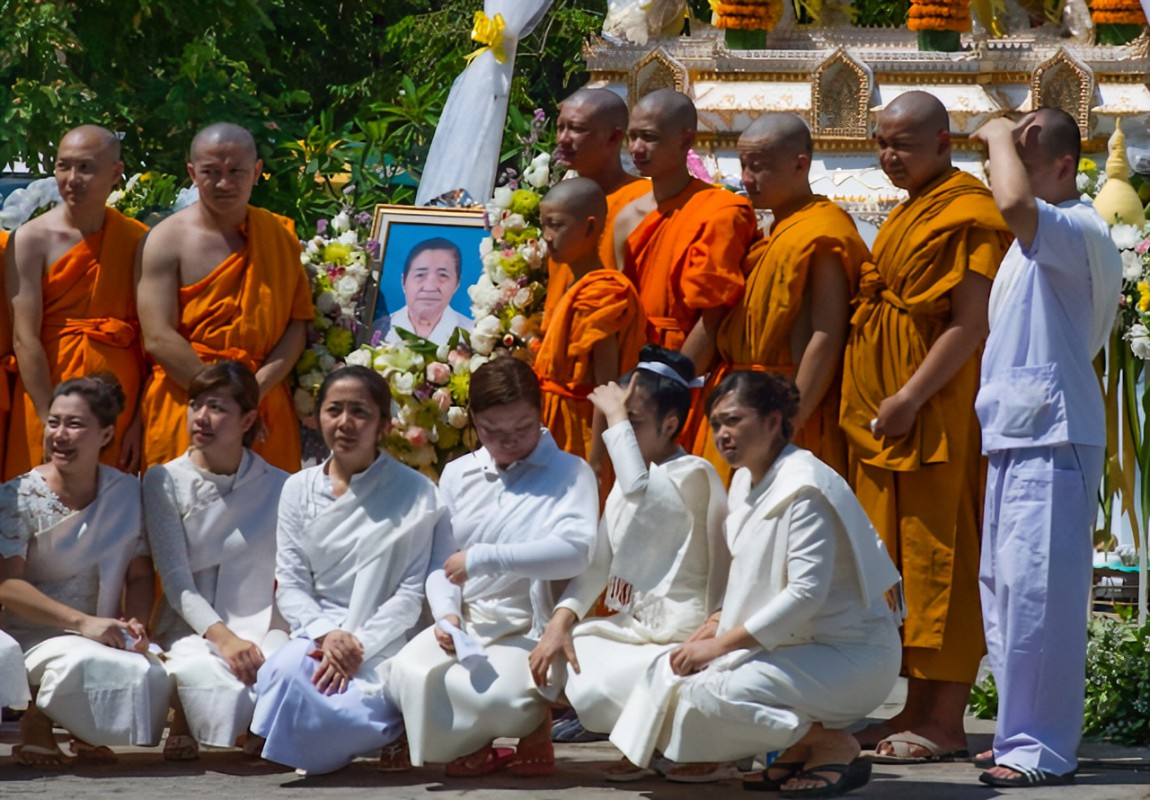 Image source/ shaniskiIn Laos they believe that the body will be reincarnated. As with many reincarnation rituals, the ceremony is lovely involving music and celebration as well as in this case, chanting. This can take place over a few days rather than just one singular ceremony.
Image source/ shaniskiIn Laos they believe that the body will be reincarnated. As with many reincarnation rituals, the ceremony is lovely involving music and celebration as well as in this case, chanting. This can take place over a few days rather than just one singular ceremony.Advertisement
23. United Kingdom - themed funerals
 Image source/ grimsbytelegraphAs the United Kingdom is becoming increasingly more secular, new more modern ways of celebrating the life of the deceased are beginning. It is now becoming popular to hold themed funerals. For example, the entire music/ decor will be set to a theme the person loved, for example, Harry Potter.
Image source/ grimsbytelegraphAs the United Kingdom is becoming increasingly more secular, new more modern ways of celebrating the life of the deceased are beginning. It is now becoming popular to hold themed funerals. For example, the entire music/ decor will be set to a theme the person loved, for example, Harry Potter.Advertisement
24. New Guinea - finger amputation
 Image source/ faceofmalawiIn New Guinea there is a ritual which is considered highly unusual. This involves finger amputation. The loved ones will amputate parts of their fingers a sign to show how much grief they are feeling now. They then burn the fingers and collect the ashes and then store them in a special place.
Image source/ faceofmalawiIn New Guinea there is a ritual which is considered highly unusual. This involves finger amputation. The loved ones will amputate parts of their fingers a sign to show how much grief they are feeling now. They then burn the fingers and collect the ashes and then store them in a special place.Advertisement
25. Native North America - totem poles
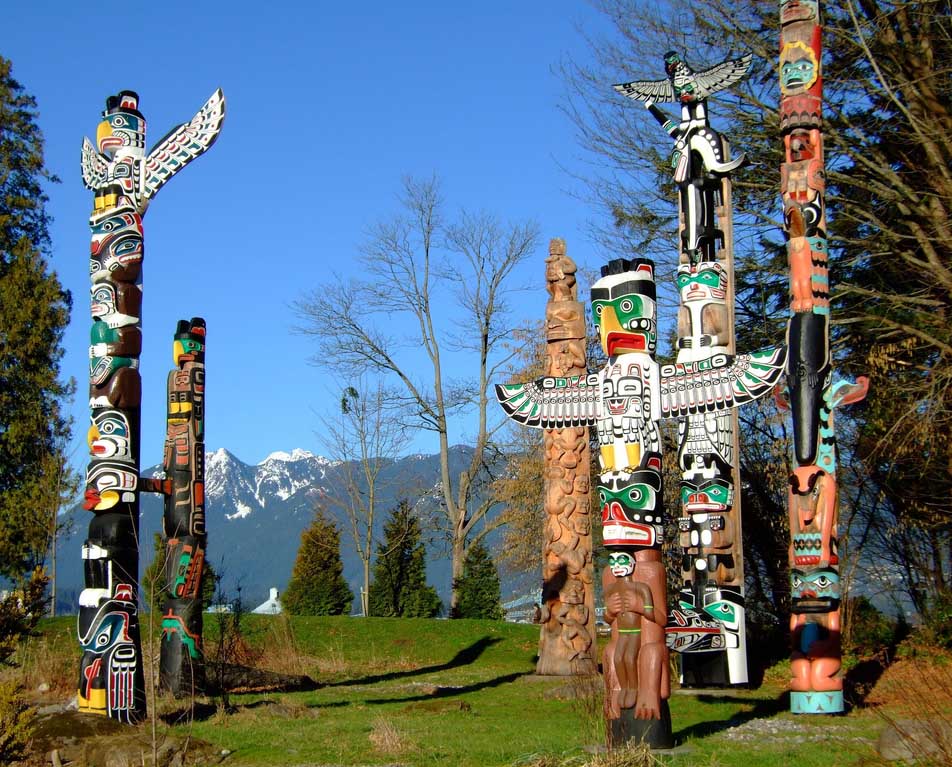 Image source/ wordpressNatives from North America would often use totem poles, which have the remains of their leaders inside. Of course, to fit parts of them inside they had to squash some of the remains. But the pole would then have the spirit and the guidance of the leaders, carried by the next leader.
Image source/ wordpressNatives from North America would often use totem poles, which have the remains of their leaders inside. Of course, to fit parts of them inside they had to squash some of the remains. But the pole would then have the spirit and the guidance of the leaders, carried by the next leader.Advertisement
26. China - offerings with joss paper
 Image source/ PinterestIn China it is still popular to give offerings to loved ones who have died. These offering are usually joss paper which has been shaped to look like luxurious goods or money, they are then burnt. It is meant to be a sign of what that person will be offered in the afterlife.
Image source/ PinterestIn China it is still popular to give offerings to loved ones who have died. These offering are usually joss paper which has been shaped to look like luxurious goods or money, they are then burnt. It is meant to be a sign of what that person will be offered in the afterlife.Advertisement
27. Australia - Don't speak their name
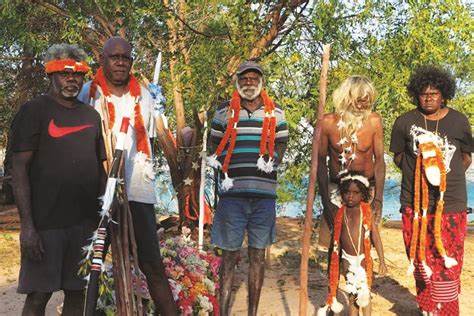 Image source/ greenleftweeklyThere was once an old tradition in Australia which still occurs in some parts, where they do not speak the name of the person who has died. So, instead they will start naming them using other words to speak about them or names similar but not the exact same.
Image source/ greenleftweeklyThere was once an old tradition in Australia which still occurs in some parts, where they do not speak the name of the person who has died. So, instead they will start naming them using other words to speak about them or names similar but not the exact same.Advertisement
28. Indonesia - a long communal burial
 Image source/ avalonfuneralplansIn parts of Indonesia when somebody dies there are ceremonies which last for days on end or even stetch out for weeks. It all starts with the killing of buffalo or big for example and then they take the horns to display them outside of their home. When the time of burial comes, they use communal tombs and bury the dead together.,
Image source/ avalonfuneralplansIn parts of Indonesia when somebody dies there are ceremonies which last for days on end or even stetch out for weeks. It all starts with the killing of buffalo or big for example and then they take the horns to display them outside of their home. When the time of burial comes, they use communal tombs and bury the dead together.,Advertisement
29. Japan - Bon Odori dance
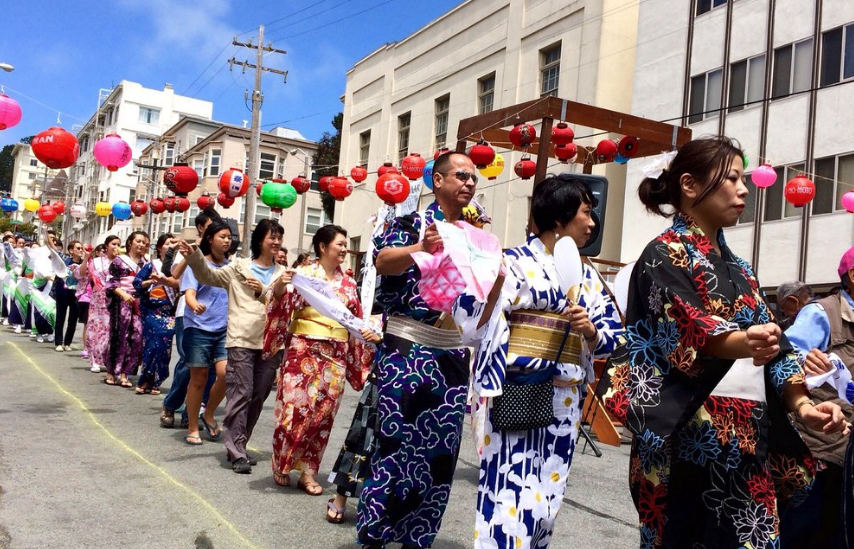 Image source/ FucheapThe Bon Odori dance in Japan is a three-day festival which is intended to be a ritual for all those who have departed the earth where people come together to celebrate past lives and remember one another. There is a particular kind of dance performed in each region of Japan.
Image source/ FucheapThe Bon Odori dance in Japan is a three-day festival which is intended to be a ritual for all those who have departed the earth where people come together to celebrate past lives and remember one another. There is a particular kind of dance performed in each region of Japan.Advertisement
30. Modern world - livestreaming
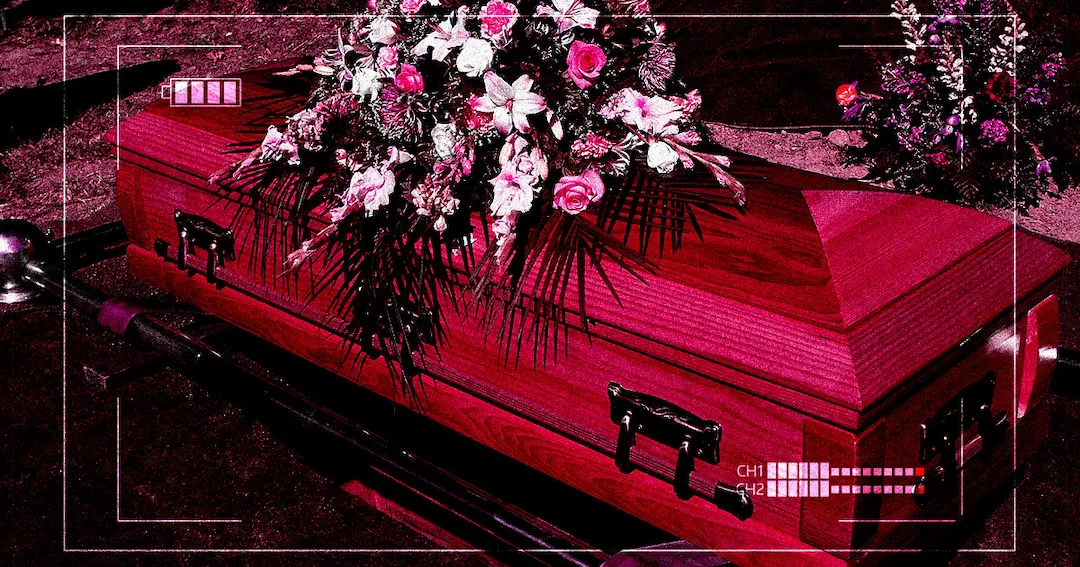 Image source/ FuturismNow this ritual does not happen in one culture. Livestreaming funeral ceremonies is a growing tradition in the modern world which is taking place in more and more countries. It allows loved ones from different countries to be able to in a kind of way attend the ceremony they may not otherwise have been able to.
Image source/ FuturismNow this ritual does not happen in one culture. Livestreaming funeral ceremonies is a growing tradition in the modern world which is taking place in more and more countries. It allows loved ones from different countries to be able to in a kind of way attend the ceremony they may not otherwise have been able to.Advertisement